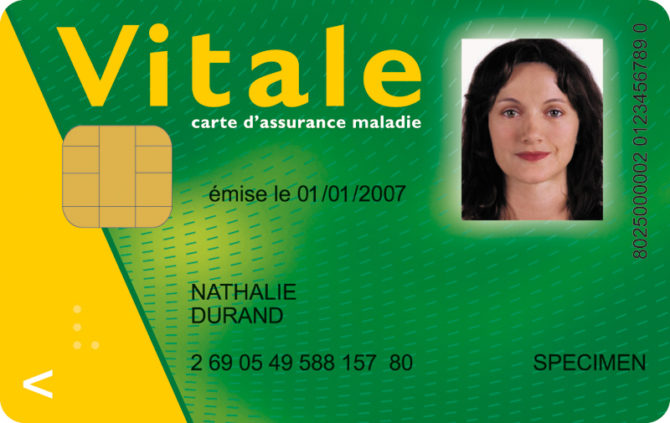Universal healthcare in France: the PUMA reform

In January 2016, the old CMU system was replaced by the new Protection Universelle Maladie known as PUMA for short. In a nutshell, here are the main points about accessing the French healthcare system.
Getting your ‘green card’ in France. Is it really that Vitale?
One of the key questions when moving or living in France is your health care rights. The French healthcare system is actually quite simple and it has a very good reputation however it’s true that when new to France, it can all seem a little bit too much.
The main questions revolve around how to get the notorious carte vitale. Why does it take so long? Can my family be covered? What documents do I need? It’s true that obtaining this card is the subject of many heated conversations between expats, but if all your paperwork is in order, you can get a carte vitale reasonably quickly. For more complicated cases it can take much longer and I’ve taken on some cases where people have been waiting for 18 months, hence the bad reputation for getting this ‘green card’.
As a relocation specialist and an expert in many of the different processes in France, the answers to these questions are relatively simple. To get more information you can check out the CPAM website www.ameli.fr website but I have tried to simplify the information into something understandable and quick to read.
What is a Carte Vitale?
I have put this as the first question as most people think that having a carte vitale gives them access to health care in France. This is not true. And yet, everyone wants one. The carte vitale is really just the card that facilitates your reimbursements and avoids you having to pay upfront for your health care.
Before you can have a carte vitale, you need to be ‘in’ the French healthcare system and your healthcare rights need to be activated. These are two separate processes and the first priority is to ensure that you are in the French healthcare system. Once your rights have been opened, you can then ask for a carte vitale.
Also, you can add your beneficiaries & dependents to your health care rights ie husband/wife & children. If you wish to add your partner to your health care cover, they would need to be ‘inactive’ ie be dependent upon you.
TIP: As getting the carte vitale can take some time always ask for an ‘attestation de couverture sociale’ which proves you have access to health care in France whilst you are waiting for your carte vitale to be processed.
Note that a carte vitale is not given automatically once you are in the health care system. You need to ask for it and follow up. If you wait for them to contact you, you will be waiting a long time> Believe me, I am talking for experience. I have dealt with cases that are securely in the health care system ie they have validated their rights but after 18 months are still waiting for their carte vitale. This is generally because either they haven’t asked for it officially, or they haven’t followed up one of the many letters asking for documents.
So now let’s look at how you can get into the health care system…
What are my options for accessing the French healthcare system?
There are really 4 main categories for obtaining access to health care in France:
a) A salaried employee
b) A business owner (either sole trader or limited company)
c) An inactive person (retiree)
d) A resident of France (new since January 2016)
Each of these people have one thing in common, they have paid or are paying their cotisations sociales. These are the equivalent of your national insurance contributions ie they are paying into or have paid into the French healthcare system.
Like most healthcare systems, if you don’t pay in you cannot qualify to obtain healthcare. I’m not saying that if you have no money you can’t get health care, but I am saying that you have to justify this when making your application.
If you are the husband, wife or child (under the age of 16) of a salaried person, business owner or retiree, you can also gain access to healthcare rights. Of course, again, this doesn’t happen automatically, you need to fill in the forms.
a) Salaried employee
If you relocated to France and are working as an employee, you will have health care coverage in France. Not a problem. However, you need to apply for this via the CPAM (Caisse Primaire Assurance Maladie). Your company will sometimes do this for you but they are not obliged to by law. So if you do nothing, you will not have health care cover and ultimately no carte vitale. It’s the responsibility of the employee to complete the paperwork. This is the big mistake of most new employees in France, they think the paperwork is taken care of for them, and that’s rarely the case.
b) A business owner
If you have set your business up in France either as a micro-entrepreneur (sole trader) or with a SARL type business (Ltd company), you will also have access to health care via RSI and/or the URSSAF. You can get more information:
You have access to the health care system from Day 1 of your business set up. You will receive a letter of ‘affiliation’ from the RSI and you will need to provide them will various documents to prove your civil status. So prepare your document list in advance.
For both salaried and business owners, you will receive a temporary social security number whilst your file is being validated by the SANDIA. Once validated by the SANDIA, you will be issued with a carte vitale. Again, this doesn’t happen automatically, you need to follow up regularly.
The carte vitale is not issued by the RSI or URSSAF. These are the government authorities that take your social contributions. The processing of your carte vitale is done by the mutuelle that you chose when you set up your business activity. This could be the RAM, Harmonie Mutualité, Mutuelles du Soleil or another government agreed service provider.
c) An inactive person/retiree
For most non-French inactive or early retirees, you can access the system. The most likely choice has always been the CMU. This basically was the option for most people who didn’t fall under the other categories. They took into account your previous years’ income and then charged you 8% of anything over and above €9,601. The problem with the CMU was you had to be a resident for 5 years to request it. Other times they gave it to you without fulfilling this criteria, a bit of a strange system to say the least from an affiliation perspective.
La loi de financement de la sécurité sociale 2016, voted on 21st décembre 2015 to replace the CMU by the PUMA. See section d) Resident in France for more details.
If you are a retiree who is receiving a pension from another country, you can ask for your healthcare in France. You ask for the S1 form from your country of origin and then complete Cerfa 60-3406 Declaration en vue de l’immatriculation d’un pensionné. You will have to provide proof of the pension you are receiving, along with the usual documents: birth certificate (translated), passport, proof of residence & pension. They take about 4-5 weeks to affiliate you into the healthcare system and then another 3-4 weeks to get your carte vitale.
d) Resident in France
The CMU (Couverture Maladie Universelle) has been replaced by the PUMA (Protection Maladie Universelle). Confused? Well so are a lot of people right now.
It was created to simply access to health care and avoid being cut off if you changed from one regime to another. It is access to health based on residency in France. So if you have been in France for more than 3 months and can prove this, you can apply for the PUMA at the CPAM.
You will need to provide:
• CERFA form
• Passport
• Birth certificate & legal translation
• Proof of residence in France for more than 3 month
• Bank RIB
• Declaration de ‘medecin traitant’
The CPAM will affiliate you for health rights but it is the URSSAF which will take the ‘cotisations’ for access. As I said above, healthcare isn’t free; you need to pay into the system, how much you pay will depend on your previous years’ earnings.
Under the CMU system, you paid 8% over and above 9,601 euros. Under the PUMA it is difficult to get an exact number at the moment from the URSSAF but from what I have researched if you earn over 9,654 euros you will contribute via the URSSAF. The percentage will be about 8% but again no definite confirmation as yet. So yes, you can apply for this and you will get access to health care via the CPAM quite quickly. However the cost needs to be calculated. The CPAM confirmed that this would be free for retirees.
How does the French care system actually work?
Again, it’s not that difficult but it can seem like it when reading the different websites on the subject I admit.
So basically, you need to be registered with a local GP. You do this by getting your doctor to sign the Declaration de Médecin Traitant. This is one of the documents that you will be asked to hand in to access your health care.
You then go to see the doctor, pay the appropriate fee (if you don’t have the carte vitale) and you will be reimbursed directly into your account. The reimbursement is quite quick 5 – 10 business days. If you have a carte vitale you would give the doctor your carte vitale and this avoids the upfront payment.
If you need to see a specialist your GP will write you a letter that you take to see the specialist of your choice. For some specialists you don’t need a letter eg gynecologist, dentist.
I certainly hope this has helped answer a few of those niggling questions. If you need any help, don’t hesitate to get in touch.
 FrenchEntrée contributor Tracy Leonetti is a French red tape expert with over 20 years of experience helping people deal with french administrative problems. Both for people moving to France or already living in France, Tracy provides invaluable help with child benefit payments, small business set up, car registrations, utilities set up, and healthcare registration, to name just a few.
FrenchEntrée contributor Tracy Leonetti is a French red tape expert with over 20 years of experience helping people deal with french administrative problems. Both for people moving to France or already living in France, Tracy provides invaluable help with child benefit payments, small business set up, car registrations, utilities set up, and healthcare registration, to name just a few.
Share to: Facebook Twitter LinkedIn Email
More in carte vitale, health, healthcare, insurance
Leave a reply
Your email address will not be published. Required fields are marked *




REPLY